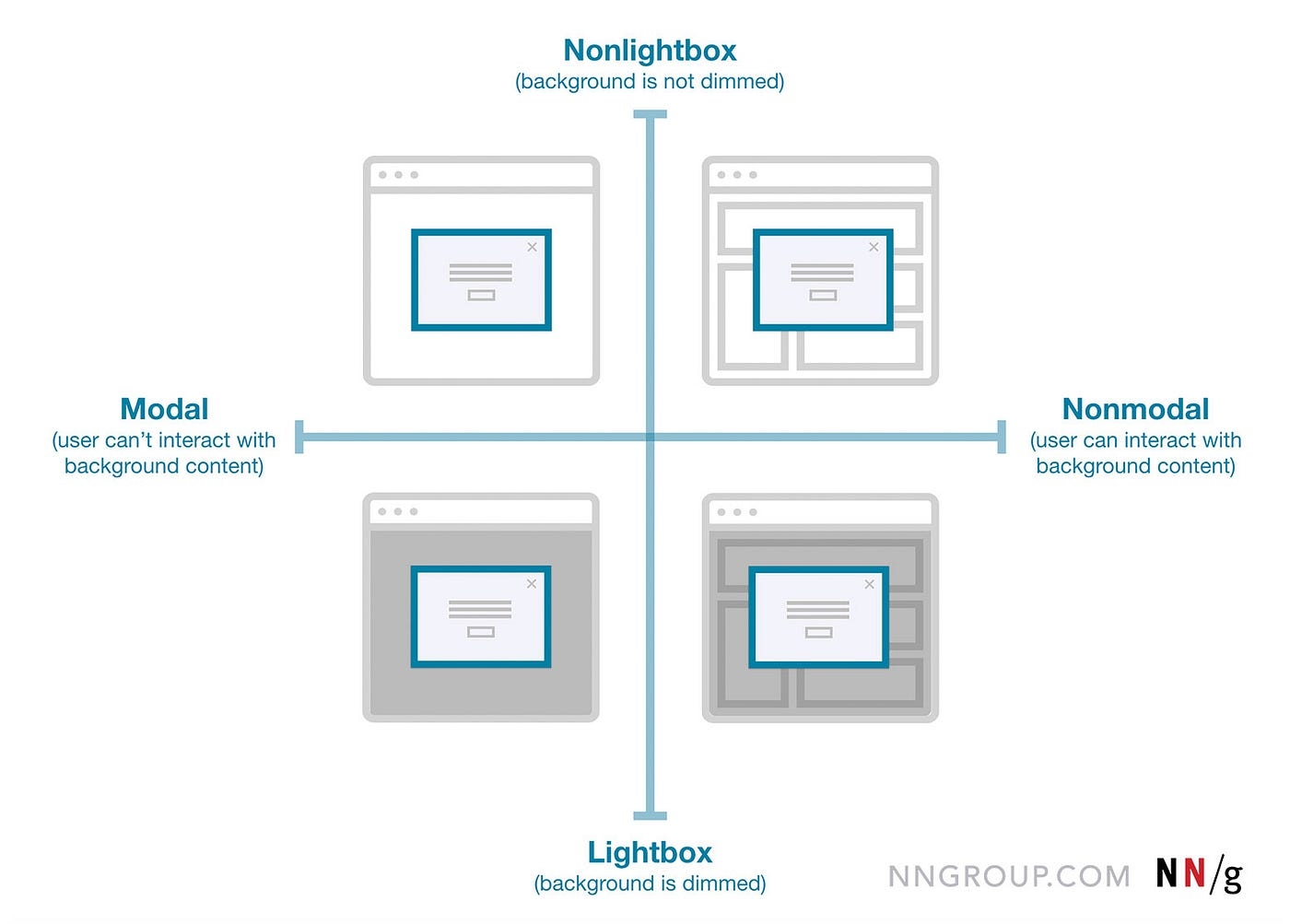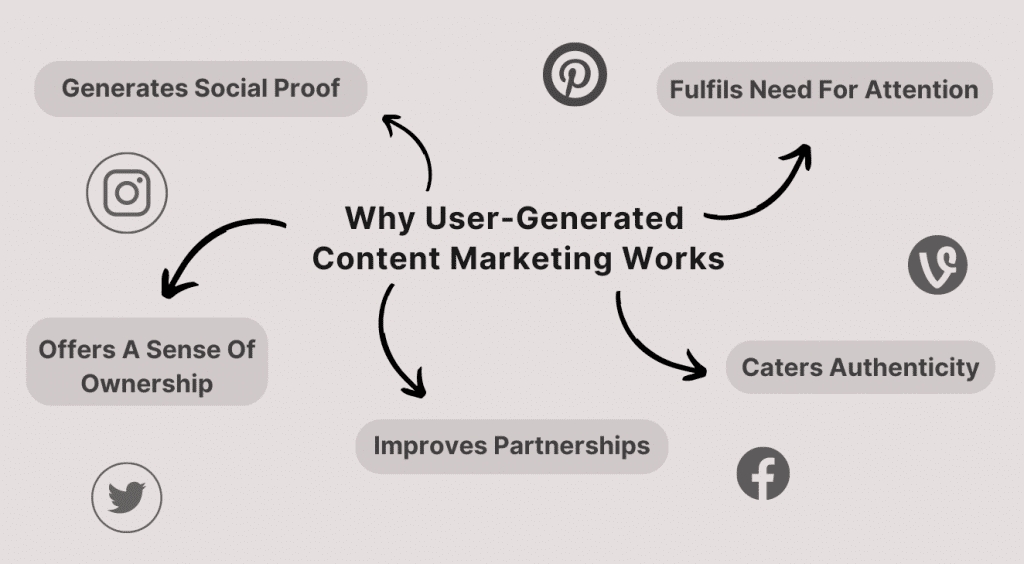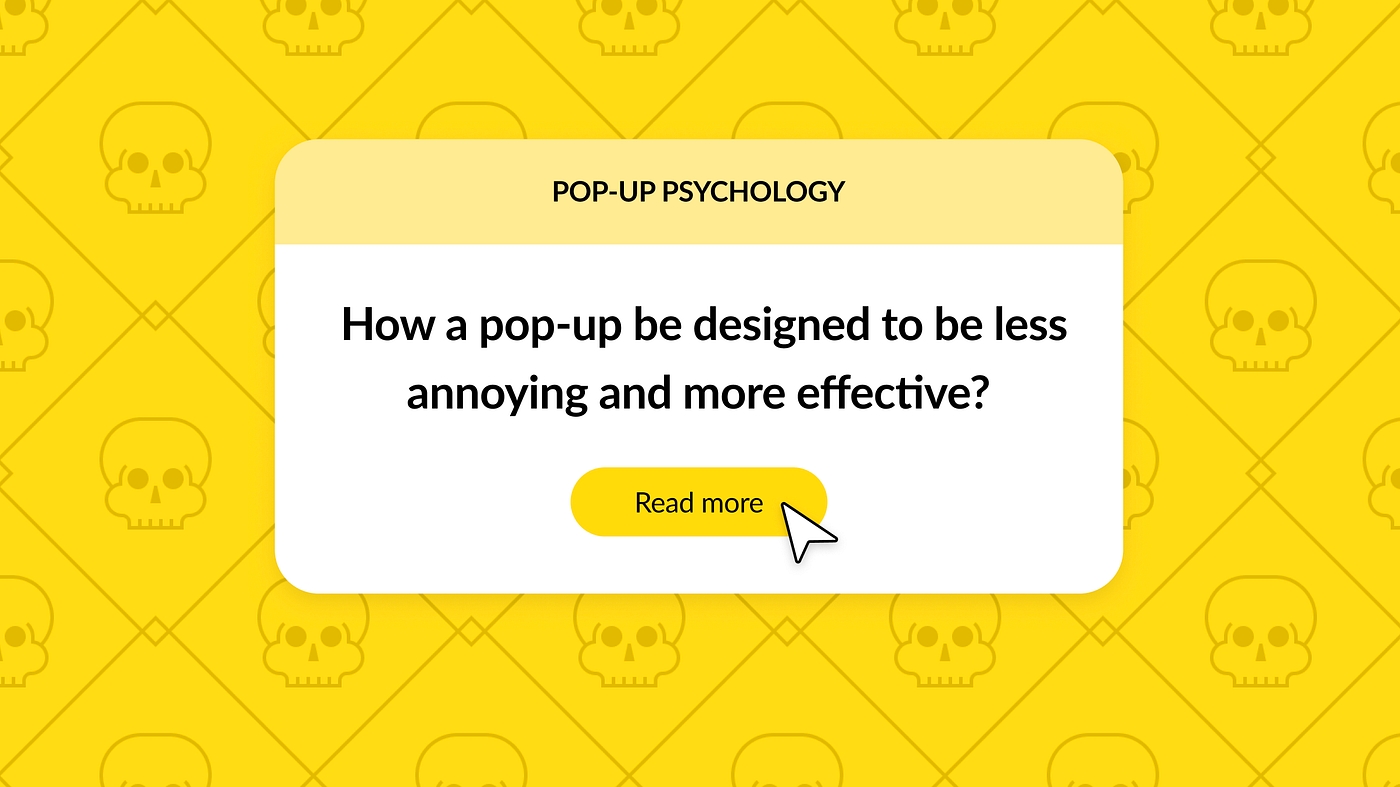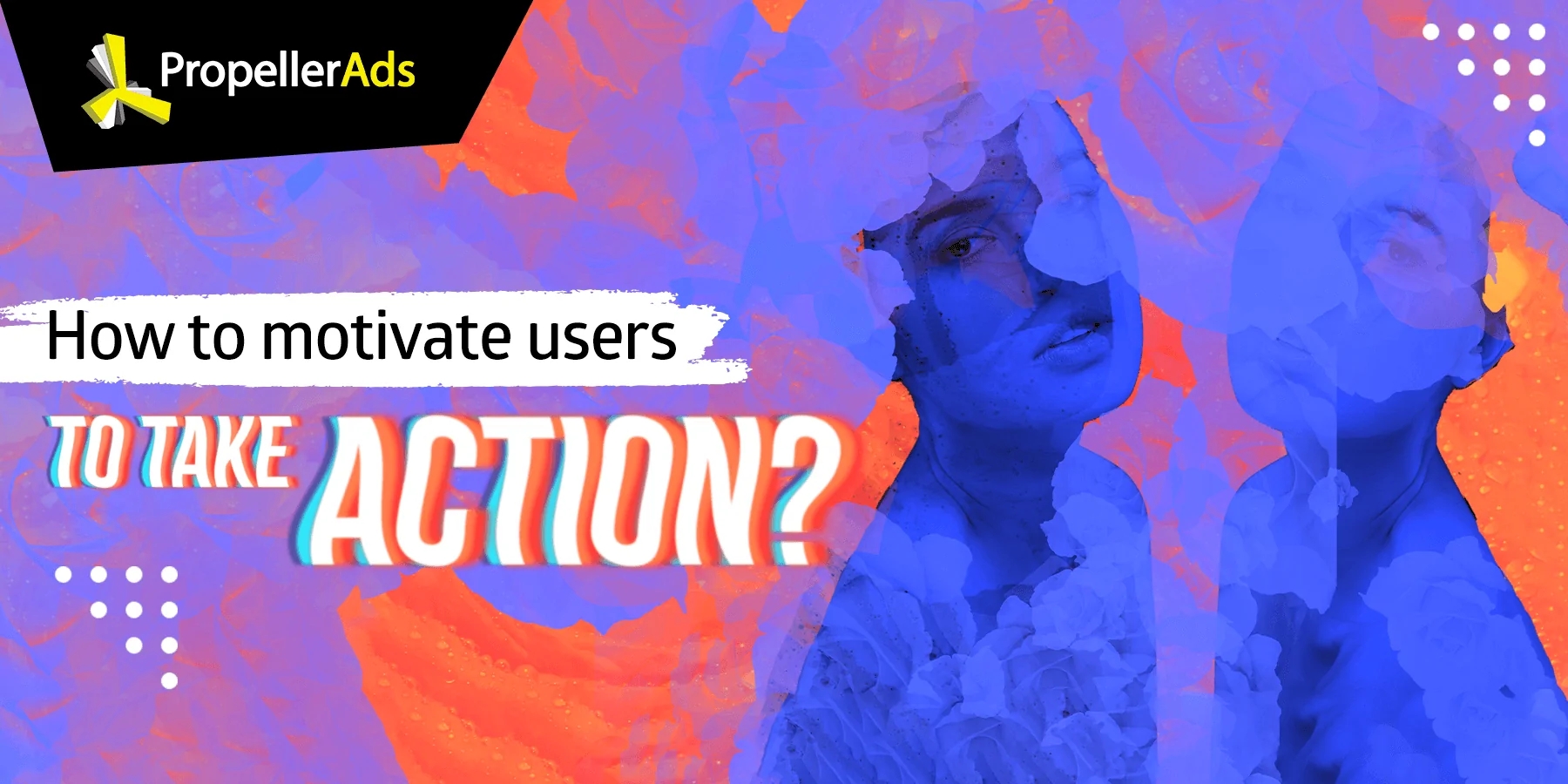Understanding the psychology behind popunder ads and strategies to effectively capture and retain user attention.
Buy CPC Traffic | Buy Display Ads | Exclusive traffic sources | Buy Push Ads | Popunder ADS | Buy Native Ads | Buy Preroll Ads

Buy CPC Traffic | Buy Display Ads | Exclusive traffic sources | Buy Push Ads | Popunder ADS | Buy Native Ads | Buy Preroll Ads
Popunder ads have become a common feature of the online advertising landscape, appearing beneath the main browser window and capturing the attention of users. However, the effectiveness of these ads depends on much more than just their placement and design. To truly capture and maintain user attention, advertisers must understand the psychology behind popunder ads.
One of the key aspects of the psychology behind popunder ads is the element of surprise. When a popunder ad appears unexpectedly, it triggers a response in the user's brain, forcing them to divert their attention from the original content they were focused on. This element of surprise is key to capturing attention, as humans are naturally drawn to unexpected stimuli.
Another important factor in capturing and maintaining user attention with popunder ads is the element of relevance. Ads that are tailored to the user's interests and preferences are more likely to be noticed and engaged with. By using targeting technologies and analyzing user data, advertisers can deliver ads that are highly relevant and personalized, increasing the chances of capturing user attention.
Furthermore, the design and content of popunder ads play a vital role in capturing and maintaining user attention. A visually appealing and well-designed ad is more likely to catch the user's eye and keep them engaged. Additionally, the content of the ad should be concise, informative, and compelling, offering the user a clear value proposition and incentivizing them to click or interact with the ad.
In conclusion, understanding the psychology behind popunder ads is crucial for advertisers who want to capture and maintain user attention. By leveraging the element of surprise, delivering relevant ads, and creating visually appealing and engaging content, advertisers can maximize the impact of their popunder ads and effectively reach their target audience.
The Intricacies of Popunder Advertising Tactics
Popunder ads have become a popular advertising strategy due to their ability to capture and maintain user attention. However, successful implementation of popunder ads requires a deep understanding of the psychological factors that influence user perception and engagement.
One of the key tactics in popunder advertising is timing. It is crucial to carefully time when the popunder ad appears to maximize its impact. Research has shown that popunders are most effective when they appear after the user has initially engaged with the website content. This ensures that the user is already invested in the site and more likely to pay attention to the popunder ad.
A well-designed and visually appealing popunder ad is another crucial factor in capturing user attention. The ad should be visually distinct from the website content, using contrasting colors and eye-catching imagery. Additionally, the ad should have a clear call to action that entices the user to click or engage further.
Psychological triggers can also be employed in popunder advertising to increase user engagement. For example, leveraging the fear-of-missing-out phenomenon can be effective by incorporating time-limited offers or exclusive content in the popunder ad. This taps into the user's desire to not miss out on a valuable opportunity.
Another tactic is personalization. By utilizing user data and targeting specific demographics or interests, popunder ads can be tailored to the individual user's preferences. This personalized approach enhances the relevance of the ad, increasing the likelihood of user engagement.
It is important to note that popunder advertising should be implemented with care and respect for the user experience. Excessive or intrusive popunders can result in annoyance or frustration, leading to negative perceptions of the brand or website. To strike the right balance, advertisers should prioritize relevancy, frequency capping, and easy opt-out options.
In conclusion, popunder advertising requires careful consideration of various factors to effectively capture and maintain user attention. By understanding the intricacies of timing, design, psychological triggers, and personalization, advertisers can create engaging and impactful popunder ads that drive results. To learn more about popunder advertising and buy ads, visit buy push ads.
Understanding the Human Psychology Behind Popunder Ads
Popunder ads are a widely used advertising format that has become a part of our online browsing experience. These ads are designed to capture and maintain user attention, but have you ever wondered why they are so effective? The answer lies in the psychology behind popunder ads.
The Element of Surprise
One of the main reasons why popunder ads captivate user attention is the element of surprise. When a popunder ad appears on the screen, it interrupts the user's browsing experience, creating a sense of curiosity and intrigue. Humans are naturally drawn to unexpected events, and popunder ads play on this aspect of human psychology.
The Power of Intrusiveness
Popunder ads are inherently intrusive in nature. They are designed to appear in a separate window behind the main browser window, making them hard to ignore. This intrusiveness triggers a psychological response in users, as they feel compelled to address and interact with the ad. This sense of urgency is what drives user attention and engagement.
According to studies, the brain's attention system is highly sensitive to stimuli that are unexpected or intrusive. Popunder ads capitalize on this sensitivity by interrupting the user's task at hand and redirecting their attention to the ad. By doing so, they effectively capture and maintain user attention.
Curiosity and Intrigue
Popunder ads create a sense of curiosity and intrigue, capturing user attention.
Intrusiveness
The intrusive nature of popunder ads triggers a psychological response, driving user attention and engagement.
Attention Sensitivity
Popunder ads exploit the brain's sensitivity to unexpected and intrusive stimuli, effectively maintaining user attention.
Overall, the psychology behind popunder ads revolves around leveraging human curiosity, intrusiveness, and attention sensitivity. By understanding these psychological factors, advertisers can create more engaging and effective popunder ad campaigns. However, it is important to strike a balance, as excessive use of popunder ads can also lead to user frustration and negative brand perception.
The Art of Capturing and Sustaining User Attention
When it comes to online advertising, capturing and maintaining user attention is an art form in itself. With so many distractions vying for their attention, it's essential to understand the psychological factors that influence user behavior and use them strategically in your popunder ads.
The Power of Visual Appeal: Humans are highly visual creatures, so it's crucial to make your popunder ads visually appealing. Use eye-catching images and colors to grab users' attention and entice them to explore further.
The Element of Surprise: People are naturally curious and intrigued by the unexpected. Use this to your advantage by employing surprising or unconventional elements in your popunder ads. By breaking patterns and surprising users, you can instantly capture their attention.
The Importance of Relevance: Relevance is key to sustaining user attention. Make sure your popunder ads align with the users' interests, preferences, or needs. When the content is relevant, users are more likely to engage with your ads and stay engaged for longer periods.
The Power of Personalization: Personalization is another factor that can greatly enhance the user experience. Tailor your popunder ads to match each user's preferences, behaviors, or demographic characteristics. By making users feel seen and understood, you can create a stronger bond and increase their attention span.
The Role of Emotional Engagement: Emotions play a significant role in capturing and sustaining user attention. Create popunder ads that evoke positive emotions such as joy, excitement, or anticipation. Alternatively, tapping into negative emotions like fear, curiosity, or urgency can also be an effective way to keep users engaged.
The Power of Storytelling: Humans have an innate love for stories. Incorporate storytelling elements in your popunder ads to create a narrative that users can connect with. By creating a story arc, you can capture users' attention and hold it until the end.
In conclusion, capturing and sustaining user attention requires a strategic understanding of psychological factors. By utilizing visual appeal, surprise, relevance, personalization, emotional engagement, and storytelling techniques, you can create popunder ads that effectively capture and hold user attention, ultimately leading to higher conversion rates and better overall user experiences.
Techniques to Engage Users with Popunder Ads
Popunder ads are a powerful tool for capturing and maintaining user attention. However, it is important to use them effectively in order to engage users and achieve your advertising goals. Here are some techniques to engage users with popunder ads:
1. Catchy and Relevant Headlines

The headline of your popunder ad is the first thing that catches the user's attention. It should be catchy, concise, and relevant to the user's interests. A well-crafted headline can intrigue the user and make them want to learn more.
2. Compelling Visuals

Visuals play a significant role in engaging users with popunder ads. Use high-quality images or captivating videos that are relevant to your message. Visuals can create an emotional connection with users and make your ad more memorable.
3. Clear Call-to-Action
A clear and compelling call-to-action (CTA) is crucial for engaging users with popunder ads. The CTA should be concise, easy to understand, and encourage the user to take the desired action, such as clicking on the ad or making a purchase. Use action-oriented words that create a sense of urgency or excitement.
4. Personalization
Personalization is a powerful technique for engaging users. Tailor your popunder ads to individual users based on their browsing behavior, demographics, or preferences. Personalized ads are more likely to catch the user's attention and generate a positive response.
5. A/B Testing
Conduct A/B testing to optimize your popunder ads. Create multiple variations of your ads and test them to see which ones perform better. Analyze the results and make data-driven decisions to continuously improve your ad engagement.
6. Frequency and Timing

Be mindful of the frequency and timing of your popunder ads. Bombarding users with too many ads or displaying them at inconvenient times can annoy users and drive them away. Find the right balance to maximize user engagement without overwhelming them.
In conclusion, engaging users with popunder ads requires strategic planning and thoughtful execution. By using catchy headlines, compelling visuals, clear CTAs, personalization, A/B testing, and considering frequency and timing, you can create popunder ads that capture and maintain user attention effectively.
Exploring the Factors That Influence User Attention Span

In today's fast-paced digital world, capturing and maintaining user attention has become increasingly challenging for online advertisers. With the rise of rtb advertising and the abundance of content vying for users' attention, understanding the factors that influence user attention span has become crucial for advertisers seeking to create effective advertising strategies.
The Role of Content Relevance

One of the key factors that can influence user attention span is the relevance of the content being presented. Users are more likely to pay attention to ads that are relevant to their interests, needs, or preferences. When an ad aligns with the user's current mindset, it increases the chances of capturing and maintaining their attention.
The Impact of Visual Appeal
The visual appeal of an ad can significantly impact a user's attention span. Eye-catching designs, colors, and images can grab a user's attention and keep them engaged. Additionally, the use of animation or interactive elements in an ad can further enhance its visual appeal and increase the chances of holding the user's attention for a longer duration.
The Effect of Timing and Placement
Timing and placement also play a crucial role in capturing and maintaining user attention. Ads that appear at the right time, when the user is more likely to be receptive, have a higher chance of success. Additionally, the placement of the ad on the webpage or within an app can determine whether it gets noticed or overlooked. Strategic placement can ensure that the ad is in the user's direct line of sight, increasing the likelihood of capturing their attention.
In conclusion, understanding the factors that influence user attention span is essential for advertisers looking to create effective advertising strategies. By considering content relevance, visual appeal, timing, and placement, advertisers can increase the chances of capturing and maintaining the attention of their target audience.
The Impact of Cognitive Bias on Popunder Ad Effectiveness
Cognitive biases, or the systematic pattern of deviation from rationality in decision-making, play a significant role in the effectiveness of popunder ads. These biases affect how users perceive and interact with the ads, ultimately influencing their attention and response.
1. Confirmation Bias
Confirmation bias leads individuals to seek and interpret information in a way that confirms their existing beliefs or expectations. This bias can impact the effectiveness of popunder ads as users are more likely to notice and engage with ads that align with their preconceived notions. Therefore, targeting popunder ads to specific user preferences or interests can increase their effectiveness.
2. Anchoring Bias
Anchoring bias refers to the tendency of individuals to rely heavily on the first piece of information encountered when making decisions. In the context of popunder ads, this bias suggests that the initial impression of the ad is crucial. By presenting a compelling and attention-grabbing message or image in the initial popunder, advertisers can anchor the user's attention and increase the chances of further engagement.
3. Availability Heuristic
The availability heuristic is a mental shortcut where people rely on immediate examples that come to mind when evaluating a topic or making decisions. In the case of popunder ads, users may recall previous encounters with similar ads or experiences, which can influence their perception and response. Advertisers can leverage this bias by creating memorable and distinctive popunder ads that stand out in users' minds.
4. Scarcity Bias
The scarcity bias refers to the tendency to place higher value on items or opportunities that are perceived as rare or limited in availability. Popunder ads can tap into this bias by creating a sense of urgency or scarcity, such as limited time offers or limited stock availability. This can increase the ad's appeal and motivate users to take immediate action.
5. Bandwagon Effect
The bandwagon effect occurs when individuals adopt certain behaviors or beliefs because they believe many others are doing the same. Advertisers can leverage this bias by creating popunder ads that highlight social proof, such as testimonials or user ratings, to influence the perceptions and behavior of users. This can create a sense of trust and encourage users to engage with the ad.
Understanding and leveraging these cognitive biases can greatly enhance the effectiveness of popunder ads. By aligning with users' existing beliefs, anchoring attention, capitalizing on availability, creating a sense of scarcity, and utilizing social proof, advertisers can capture and maintain user attention, ultimately increasing the likelihood of achieving their advertising goals.
Optimizing Popunder Ad Campaigns for Maximum User Engagement

Popunder ads can be a highly effective way to capture and maintain user attention, but optimizing your popunder ad campaigns is key to ensuring maximum user engagement. Here are some strategies to consider:
Target the Right Audience: It's important to understand your target audience and tailor your popunder ads accordingly. Consider demographics, interests, and browsing habits to ensure that your ads are displayed to users who are most likely to engage with them.
Use Compelling Ad Copy: Your popunder ad copy should be concise, persuasive, and compelling. Focus on highlighting the benefits and value of your product or service, and use captivating language to grab the user's attention.
Create Eye-Catching Designs: Visual imagery plays a crucial role in capturing user attention. Use high-quality images and graphics that are relevant to your ad content and will grab the user's interest. Consider using contrasting colors to make your ad stand out.
Optimize Landing Pages: When a user clicks on your popunder ad, they should be directed to a well-designed and optimized landing page. Ensure that the landing page is user-friendly, loads quickly, and provides clear information about your product or service. Use strong call-to-action buttons to encourage user engagement.
Test Different Ad Formats: Experiment with different ad formats to see which ones resonate best with your target audience. Try various sizes, placements, and timing of popunder ads to find the optimal combination that generates the highest user engagement.
Monitor and Analyze Performance: Regularly monitor the performance of your popunder ad campaigns and analyze key metrics such as click-through rates, conversion rates, and bounce rates. Use this data to identify areas for improvement and make necessary adjustments to optimize user engagement.
By implementing these strategies, you can optimize your popunder ad campaigns to capture and maintain maximum user engagement. Remember to continually refine your approach based on data and user feedback to ensure long-term success.
What are popunder ads?
Popunder ads are a type of advertisement that open up in a new browser window, behind the main window that the user is currently viewing.
How do popunder ads capture user attention?
Popunder ads are designed to be visually appealing and attention-grabbing. They often use vibrant colors, bold images, and catchy headlines to catch the user's attention.
Why are popunder ads controversial?
Popunder ads are controversial because they can be intrusive and disruptive to the user's browsing experience. Some users find them annoying and invasive.
What are some strategies to maintain user attention with popunder ads?
Some strategies to maintain user attention with popunder ads include: ensuring that the ad is relevant to the user's interests, optimizing the ad for mobile devices, and using engaging content and interactive elements.
How can advertisers measure the effectiveness of popunder ads?
Advertisers can measure the effectiveness of popunder ads by tracking metrics such as click-through rates, conversion rates, and bounce rates. They can also conduct A/B testing to compare the performance of different ad designs or placements.
What are popunder ads and how do they work?
Popunder ads are a type of online advertisement that open in a new browser window behind the current window the user is viewing. They are triggered when a user visits a website, and can be programmed to appear after a certain amount of time or when a specific action is taken. These ads are designed to capture the user's attention by appearing in an unexpected manner.
Why do popunder ads often capture user attention more effectively than other forms of advertising?
Popunder ads are often more effective at capturing user attention because they are unexpected and intrusive. When a popunder ad opens in a new window behind the current window, it immediately catches the user's attention due to its sudden appearance. This element of surprise can make users more likely to engage with the ad, as they are curious to see what it contains.
What techniques do advertisers use to maintain user attention with popunder ads?
Advertisers use various techniques to maintain user attention with popunder ads. One common technique is to design the ad in a visually appealing and attention-grabbing manner. This can include using vibrant colors, compelling images, and clear calls to action. Additionally, advertisers may utilize engaging content such as quizzes, videos, or interactive elements to encourage users to interact with the ad and spend more time on the advertised website.
Do popunder ads have any negative effects on user experience?
While popunder ads can be effective at capturing attention, they can also have negative effects on user experience. These ads can be perceived as intrusive and disruptive, as they interrupt the user's browsing experience by opening in a new window. They may also slow down the loading time of websites and consume bandwidth. This can lead to frustration and irritation among users, potentially resulting in a negative perception of the advertised brand.
How can advertisers optimize popunder ads for better user engagement?
To optimize popunder ads for better user engagement, advertisers can consider several factors. Firstly, they should carefully choose the timing and frequency of the ads to avoid overwhelming users with too many popunders. Secondly, they should ensure that the ad is relevant to the user's interests and needs, as personalized content tends to be more engaging. Finally, advertisers should track and analyze user engagement metrics to continually improve the effectiveness of their popunder ads.
Buy CPC Traffic | Buy Display Ads | Exclusive traffic sources | Buy Push Ads | Popunder ADS | Buy Native Ads | Buy Preroll Ads
2022-2024 @ The psychology behind popunder ads: How to capture and maintain user attention